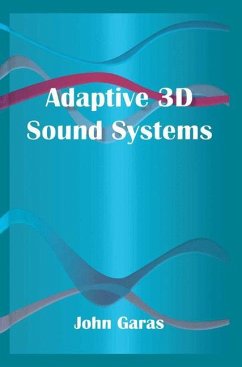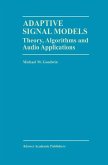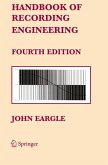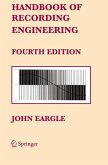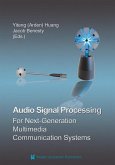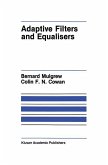Adaptive 3D Sound Systems focuses on creating multiple virtual sound sources in 3D reverberant spaces using adaptive filters. Adaptive algorithms are introduced and explained, including the multiple-error filtered-x algorithm and the adjoint LMS algorithm.
The book covers the physical, psychoacoustical, and signal processing aspects of adaptive and non-adaptive 3D sound systems. Included is an introduction to spatial hearing, sound localization and reverberation, frequency selectivity of the human auditory system, the state of the art in HRTF-based 3D sound systems, binaural synthesis, and loudspeaker displays. The adaptive approach to HRTF-based 3D sound systems is examined in detail for the general case of creating multiple virtual sound sources at the ears of multiple listeners in a reverberant 3D space. The derived solution can be applied to other applications, such as cross-talk cancellation, loudspeakers and room equalization, concert hall simulation, and active sound control. Several solutions for the problem of moving listeners are introduced. Strategies for enlarging the zones of equalization around the listeners' ears, correct loudspeakers positioning, and using multiresolution filters are proposed. Fast multiresolution spectral analysis using non-uniform sampling is developed for implementation of multiresolution filters.
The well-focused topics, along with implementation details for adaptive algorithms, make Adaptive 3D Sound Systems suitable for multimedia applications programmers, advanced level students, and researchers in audio and signal processing.
Hinweis: Dieser Artikel kann nur an eine deutsche Lieferadresse ausgeliefert werden.
The book covers the physical, psychoacoustical, and signal processing aspects of adaptive and non-adaptive 3D sound systems. Included is an introduction to spatial hearing, sound localization and reverberation, frequency selectivity of the human auditory system, the state of the art in HRTF-based 3D sound systems, binaural synthesis, and loudspeaker displays. The adaptive approach to HRTF-based 3D sound systems is examined in detail for the general case of creating multiple virtual sound sources at the ears of multiple listeners in a reverberant 3D space. The derived solution can be applied to other applications, such as cross-talk cancellation, loudspeakers and room equalization, concert hall simulation, and active sound control. Several solutions for the problem of moving listeners are introduced. Strategies for enlarging the zones of equalization around the listeners' ears, correct loudspeakers positioning, and using multiresolution filters are proposed. Fast multiresolution spectral analysis using non-uniform sampling is developed for implementation of multiresolution filters.
The well-focused topics, along with implementation details for adaptive algorithms, make Adaptive 3D Sound Systems suitable for multimedia applications programmers, advanced level students, and researchers in audio and signal processing.
Hinweis: Dieser Artikel kann nur an eine deutsche Lieferadresse ausgeliefert werden.

